How to Sand Rust Off Metal: A Practical Guide
Rust is the enemy of metal, and if you don’t deal with it quickly, it can spread and cause real damage. But how do you effectively get rid of it?
Sanding is one of the most common and effective ways to remove rust from metal surfaces. It involves using an abrasive material to physically grind away the layer of rust, revealing the clean metal underneath.
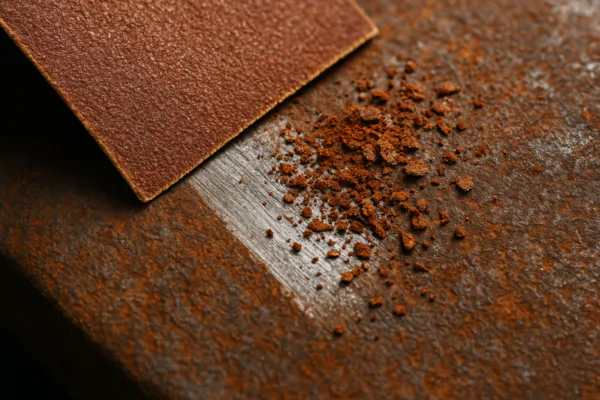
Sanding rust off a metal surface.
Removing rust by sanding is a technique used in many applications, from restoring old tools to preparing car body panels for paint. While it takes effort, it’s a reliable method. Let’s look closer at how you can do this.
Can You Sand Rust Off Metal?
Is sanding really enough to get rid of stubborn rust, or do you need something stronger?
Yes, you absolutely can sand rust off metal. Sanding works by mechanically removing the rust particles from the metal surface. For best results, you’ll need the right type of sandpaper and possibly some other tools depending on the severity of the rust.
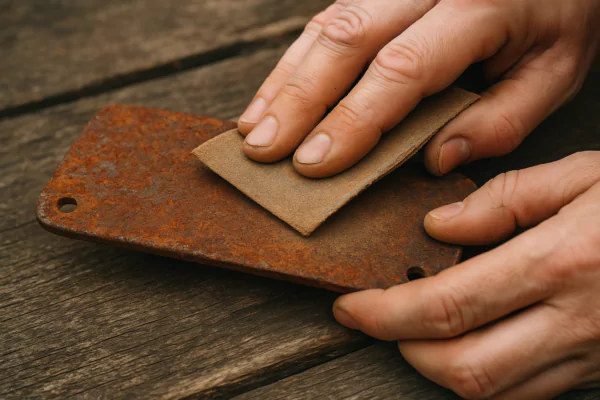
Sandpaper actively removing rust.
Sanding is effective because rust is essentially iron oxide, a layer that forms on the surface of iron or steel when it’s exposed to oxygen and moisture. This layer is often flaky and brittle compared to the solid metal underneath. By using an abrasive like sandpaper, you are physically scraping away this oxidized layer. For light surface rust, hand sanding might be enough. For more severe rust, you might need to use power tools like orbital sanders, angle grinders with flap discs, or wire brushes to speed up the process. However, even with power tools, sandpaper often plays a crucial role in the later stages to smooth the surface. The key is to remove all traces of the reddish-brown rust. If any rust is left behind, it can continue to spread underneath paint or coatings. You’ll want to sand down to bare, shiny metal. This often requires starting with a coarser grit sandpaper from NOVOGRIT to quickly remove the bulk of the rust and then moving to finer grits to smooth the surface and remove the scratches left by the coarser paper. Always wear appropriate safety gear, like gloves and a dust mask or respirator, as rust dust is not good to inhale.
What is the Best Sandpaper for Rusty Metal?
Choosing the right sandpaper is crucial for removing rust efficiently and effectively. Using the wrong type will make the job much harder and take longer.
The best sandpaper for rusty metal is typically a coarse-grit sandpaper designed for use on metal. Sandpaper with aluminum oxide or ceramic abrasive grains is often recommended because these materials are durable and effective at cutting through rust and old paint.
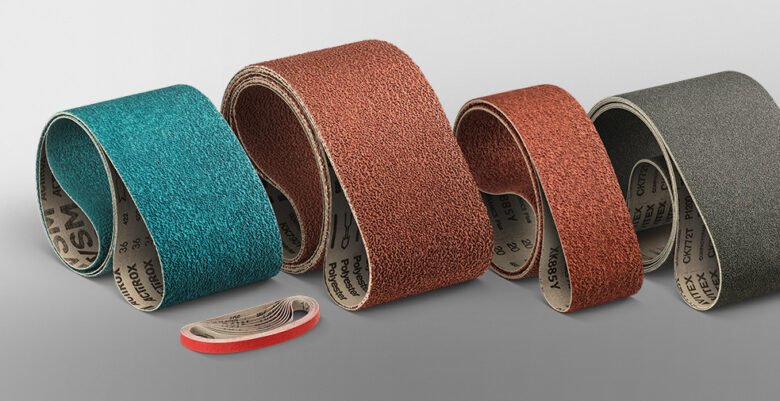
Coarse grit sandpaper, good for removing rust.
When dealing with rust, you usually want to start with a relatively coarse grit. This allows you to remove the rust quickly. Grit sizes like 40, 60, or 80 are good starting points for moderate to heavy rust. For lighter surface rust, you might be able to start with something like 100 or 120 grit. Sandpaper specifically labeled for metal or paint removal is often a good choice. NOVOGRIT offers durable aluminum oxide and ceramic abrasives in various forms, including sanding sheets, discs, and belts, that are very effective for metal work. Ceramic abrasives are particularly aggressive and long-lasting, making them excellent for tackling tough rust. The backing material of the sandpaper is also important; a strong paper or cloth backing will hold up better to the demands of sanding metal. Open coat sandpaper, where the abrasive grains are spaced further apart, can be helpful as it reduces clogging from rust and paint particles. However, with rust, you will likely still need to clean or change the sandpaper frequently as it gets clogged. After removing the bulk of the rust with a coarse grit, you will need to switch to progressively finer grits (e.g., 120, 180, 220, etc.) to smooth the metal surface and prepare it for priming and painting. The final grit you use depends on the desired finish and the type of primer you plan to apply.
What is the Easiest Way to Remove Rust from Metal?
While sanding is effective, is it always the easiest way? There are other methods available.
The easiest way to remove rust from metal often depends on the size of the object, the severity of the rust, and the available tools. For large, flat surfaces, using a power sander with a coarse grit sandpaper or flap disc is usually the fastest and easiest method compared to hand sanding.
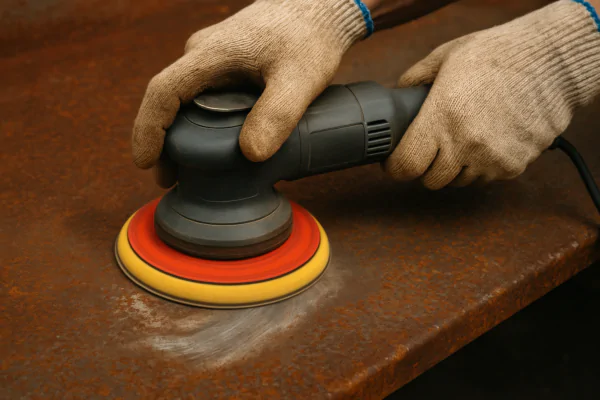
Using a power sander to remove rust.
For smaller items or intricate shapes, other methods might be easier. Chemical rust removers, which dissolve the rust, can be very effective and require less physical effort. You simply apply the chemical, let it work, and then wipe or rinse the rust away. However, these chemicals can be harsh and require careful handling and ventilation. Electrolytic rust removal is another method that uses an electrical current to reverse the rusting process, but it requires setting up a bath and a power source, which might not be practical for everyone. Sandblasting is an extremely effective way to remove rust from large items or those with complex shapes, but it requires specialized equipment and creates a lot of dust. For many DIYers dealing with rust on car panels, tools, or furniture, a combination of methods is often the easiest approach. Start with a wire brush to remove loose, flaky rust. Then, use a power sander with a coarse grit disc, like a durable NOVOGRIT sanding disc, to remove the remaining rust quickly from flat areas. For tight spots or edges, hand sanding with a coarser grit sandpaper or using a wire brush attachment on a drill might be easier. Finally, switch to finer grits with a sander or by hand to smooth the surface before priming and painting. The "easiest" method is often the one that best suits the specific task and the tools you have available.
Does WD-40 and Sandpaper Remove Rust?
WD-40 is known for its penetrating and lubricating properties, but can it actually help remove rust when combined with sandpaper?
Yes, using WD-40 in combination with sandpaper can help in removing light surface rust. The WD-40 helps to lubricate the surface, which can make sanding easier and prevent the sandpaper from clogging as quickly, allowing the abrasive to work more effectively.
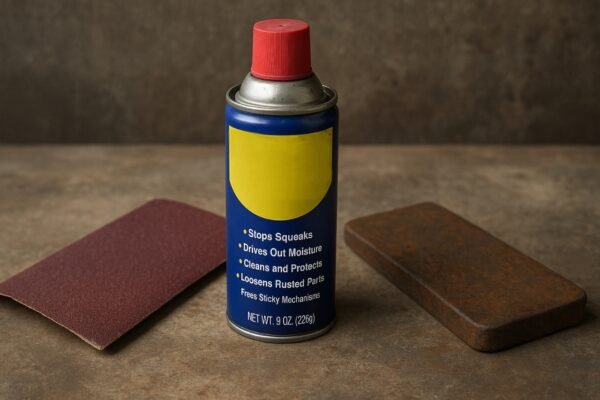
Using WD-40 with sandpaper for rust removal.
WD-40 is not a rust converter or remover on its own in the traditional sense. It doesn’t chemically dissolve rust like some dedicated rust removal products do. However, its properties can assist in the mechanical process of sanding rust away. When you apply WD-40 to a rusty surface, it penetrates into the pores and under the rust layer. This lubrication reduces the friction between the sandpaper and the metal, making the sanding action smoother. It also helps to lift and loosen the rust particles, making them easier to remove with the sandpaper. Additionally, the lubrication helps to prevent the tiny rust particles from sticking to the sandpaper and clogging it. A clogged sandpaper loses its cutting ability quickly, forcing you to change it more often. By reducing clogging, WD-40 can extend the life of your sandpaper and make the sanding process more efficient. However, this method is most effective on light, superficial rust. For heavy, deep-seated rust, you will still need more aggressive methods like coarser grits of sandpaper from NOVOGRIT, power tools, or dedicated rust removal products. After using WD-40 and sanding, it is crucial to thoroughly clean the metal surface to remove any residue before priming or painting, as the oily film from WD-40 can interfere with paint adhesion.
Conclusion
Sanding is a reliable way to remove rust from metal, and using the right tools and techniques makes a big difference. By choosing appropriate sandpaper, starting with the right grit from NOVOGRIT, and possibly using methods like power sanding or even a little WD-40, you can effectively tackle rust and restore your metal items.
You may also be interested in:

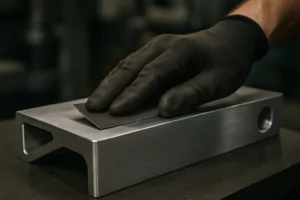
Best Sandpaper for Aluminum: NOVOGRIT's Guide to Flawless Finishes
What is the Best Type of Sandpaper to Use on Aluminum? Do you find yourself frustrated by sandpaper that gums up instantly when you try to smooth aluminum? It is
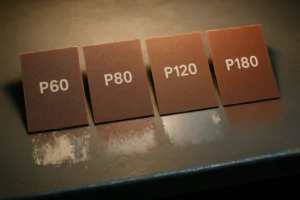
Best Sandpaper for Paint Removal: Grits, Types, & Tips | NOVOGRIT
What is the Best Sandpaper for Removing Paint? Are you tired of staring at chipped, peeling paint on your furniture, walls, or even your car? It’s a common problem, and
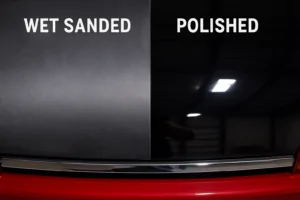
Automotive Wet Sanding: Supplies, Liquids & Best Sandpaper
Automotive Wet Sanding Supplies: What Do You Really Need? Wet sanding is a crucial technique in automotive refinishing, used to achieve a flawlessly smooth surface before painting or polishing. Unlike
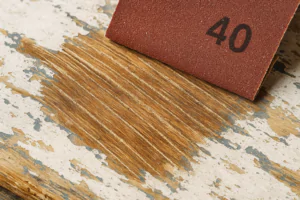
Best Sandpaper for Paint Removal & Grit Guide
What Is the Best Sandpaper for Removing Paint? Removing old paint can be a tedious job, but using the right sandpaper makes all the difference. It’s not just about grit;
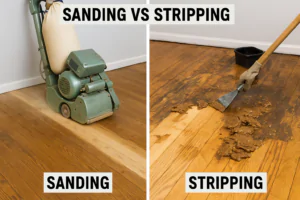
Hardwood Floor Sanding: Screen vs. Sandpaper & Best Practices
Sanding Screen vs. Sandpaper for Hardwood Floors: Which is Best? When you’re tackling hardwood floor projects, choosing the right abrasive is crucial for achieving a smooth, professional finish. Both sanding
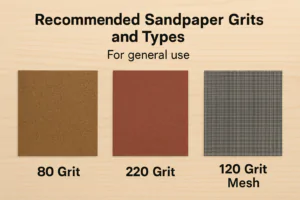
Paper Backing vs. Mesh Sanding Discs: Which Abrasive to Choose?
Paper Back vs. Mesh Sanding Discs: Which One Should You Pick? Choosing the right sanding disc backing can significantly impact your project’s efficiency and finish quality. Paper-backed discs are a
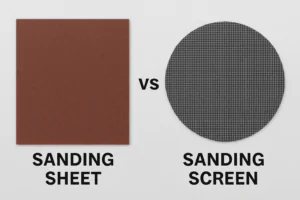
Sanding Mesh vs Paper: Which is More Economical and Better?
Is Sanding Mesh More Economical Than Sandpaper? Comparing Abrasive Costs When stocking up on abrasives, cost is always a factor. Paper sandpaper has traditionally been the standard, but newer mesh
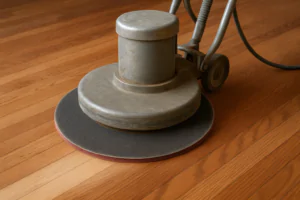
Sanding Nets & Screens Use Cases: When to Choose Mesh Abrasives
Sanding Nets and Screens: What Are Their Best Use Cases? When you encounter sanding nets or screens, you might wonder where they fit into your sanding projects. Unlike traditional solid-backed
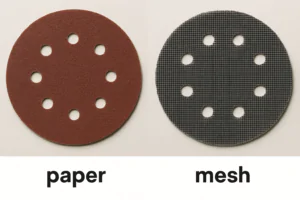
Paper vs. Mesh Sanding Discs: Which Abrasive to Choose?
Paper vs. Mesh Sanding Discs: Which Should You Buy? Choosing the right abrasive disc is essential for efficient and effective sanding. Two primary types dominate the market: traditional paper-backed discs
